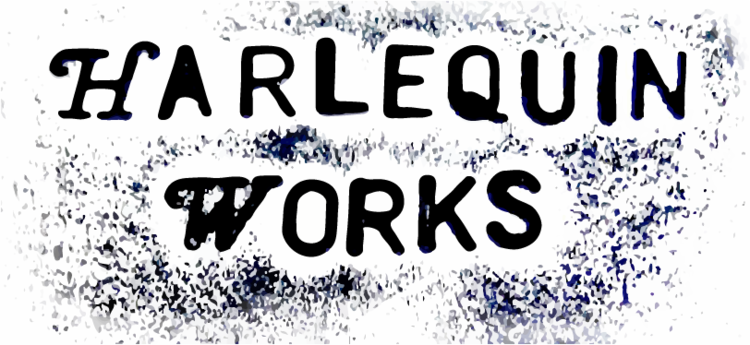I’ve started sending out a monthly Mailing List Mail. If you’d like to join the mailing list, you can do so here. Doing so gets you access to all the updates, plus any special offers or discount codes as soon as they go live, rather than waiting for me to get around to posting them here. A week or so after the mailing list mail goes out, I’ll post a blogpost version of it here.
Make sure you read right to the end for a special offer!
Hello!
How are you? Well? In the future these emails will focus on what I’ve been up to in the past month, but since this is the first, I guess it’ll need to encompass All Time up to this point. Make yourself comfortable; this shouldn’t take long.
What’s the deal?
Now, my understanding is that, prior to 1987, various things took place. HOWEVER, I was not there, and so cannot confirm this. My story begins one fateful day in 1987, and then jumps forward 18 years because this is kink stuff we’re talking about.
I’m Harley, and I’ve been on the kink scene for slightly over ten years. Ten years ago I was 23 and lived in Cornwall, and there wasn’t a whole lot going on work-wise, so I became self employed. I’ve made various things in that time. I made whips and other impact toys from paracord, I made clothing, and still do from time to time. But about 6 years ago I moved to London, and that’s when I got back into what, when I was at school, were called Resistant Materials. That’s metal, wood, and plastics. Being kinky, I started making kink stuff.
These days I’m based at my workshop in Croydon. I have a fabrication workshop and a woodshop, in addition to a smaller sewing/office area. I make heavy restraints and bondage gear, dungeon furniture, and various other things, including a popular range of queer Identity Tags and other accessories.
I also do some building work- the kind where someone wants a trapdoor building into their living room floor and a cage built underneath, and wants someone who understands to build it for them, and thus save them having to try and explain it to a builder.
New Products!
I’ve been very busy in the workshop lately, making a bunch of new heavy steel restraints.
Adjustable Industrial Manacles
(Modeled by the wonderful Faerie Willow)
There are two major problems with steel manacles, as I see it. Firstly, they’re expensive, and secondly, they’re not adjustable. I set out to try and do something about that; by using commercially available U-bolts I was able to keep the price down, and the threaded components of the U bolts give great adjustability, to the extent that I believe two sizes will cover more or less every size of wrist and ankle! Check them out in the shop.
Collar Tags
My pronouns tags have been tremendously popular for me over on Etsy. This month, I’ve brought them to my website, and also added a range of steel Collar Tags. Any text (that will fit) can be put on a tag, which can then be attached to a collar with a custom stainless steel jump ring. I’ve already had several personalised custom orders, and orders for double sided tags. This is all included in the price- just £10 for a tag, with free UK shipping from the website! These could be the perfect stocking filler for your sub, or yourself- order yours here!
Foldable Steel Stockade
In addition to the cost and lack of adjustability I mentioned before, another problem with steel restraints, particularly things like spreader bars, is that they can be large and awkward to store or transport. That inspired me to make the Steel Stockade- once again, U-bolts keep the price down, and 40x5mm steel bar folds in half on a robust hinge, and is then held rigid when the central collar U bolt is secured. Buy yours here!
Christmas is coming!
I KNOW I haven’t really been on top of it either- it’s been a weird year, to say the least. It’s true, though, it’s now less than a month to Christmas. If you use code “HWCHRISTMAS” at checkout, you’ll get 10% off any order.
Also, I'm very happy to announce that, in the absence of an in person Queer Fayre this year, there's an online one instead, in conjunction with WitchyWomxn. Head over to their website to see what that's about.
That brings us to the end of the first monthly HarlequinWorks Monthly Upate! Remember, sign up to the mailing list to get next month’s news and offers early!













